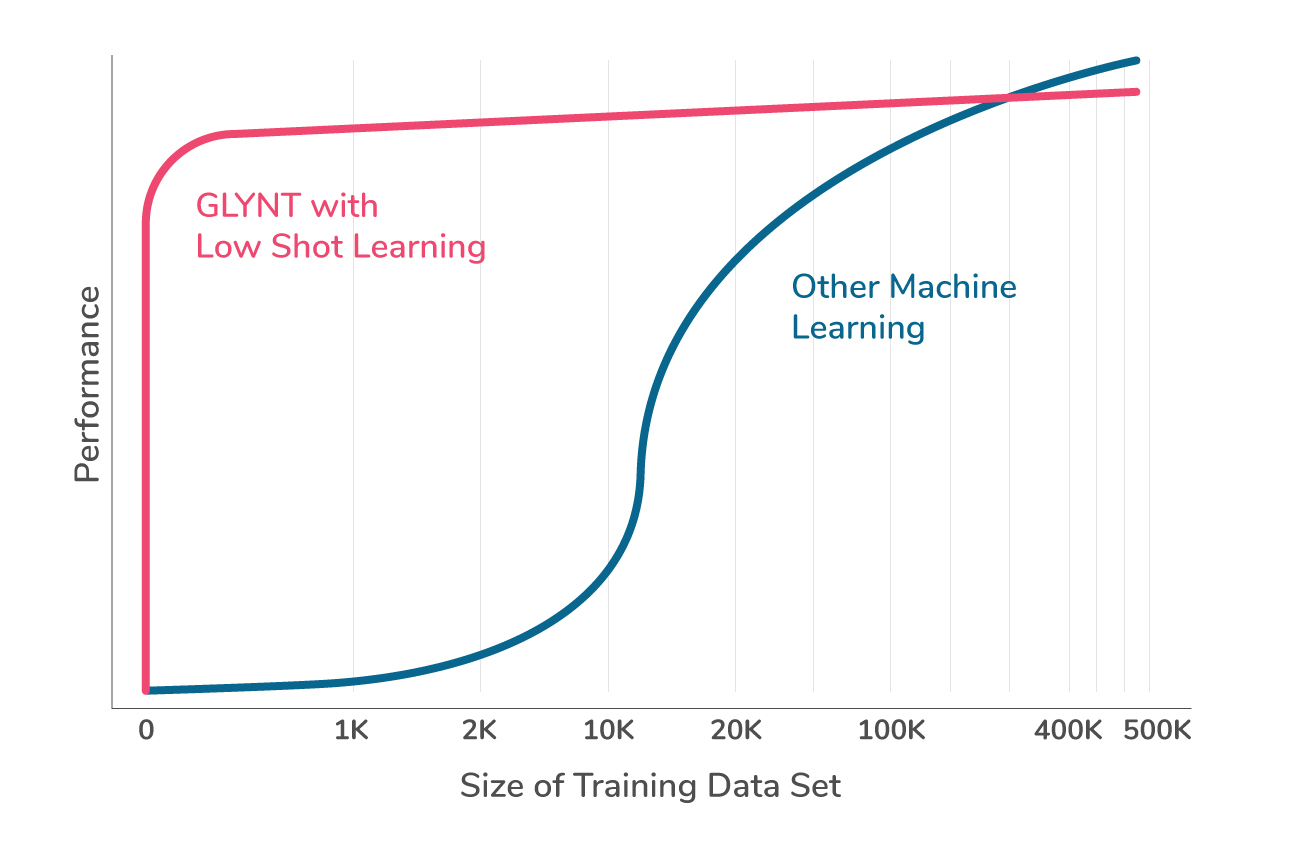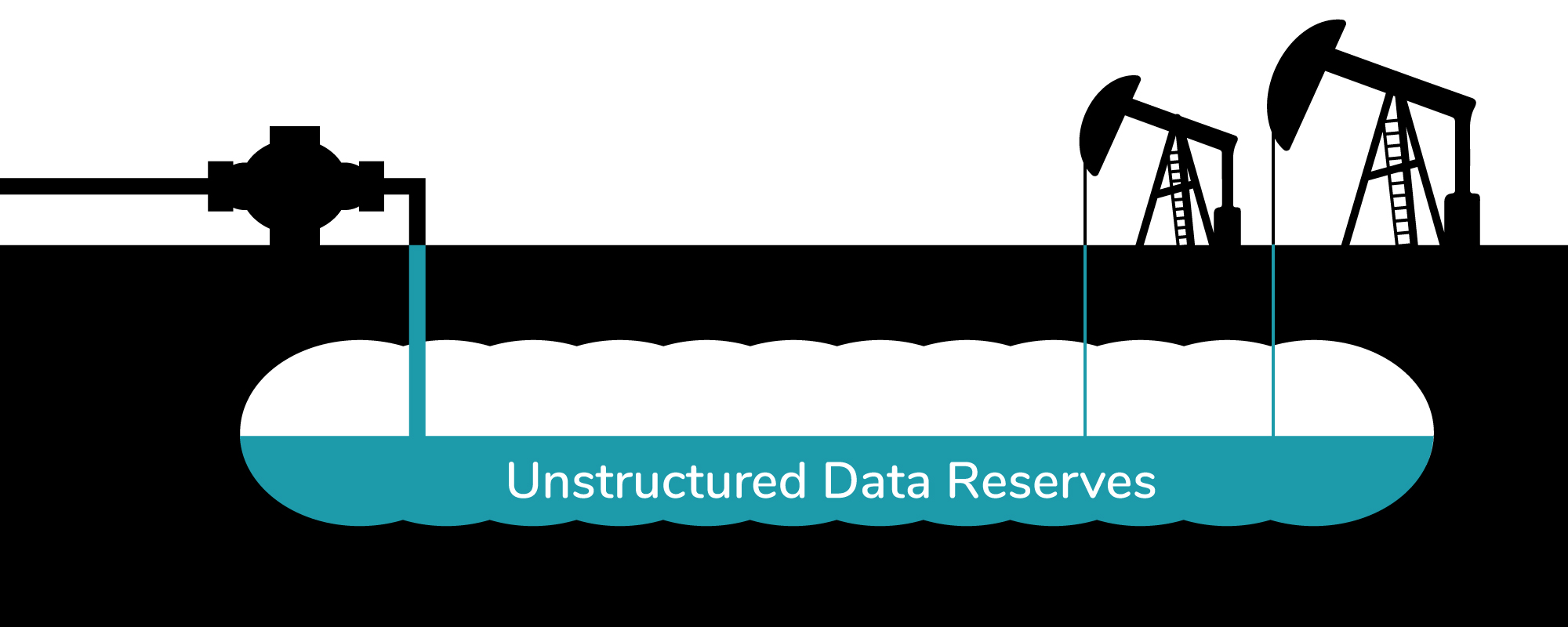So today’s perceived wisdom is: To win at AI one must produce great results, and to produce great results one needs a lot of data.
But recently our company, GLYNT, announced a new product feature, Low Shot Learning. Instead of requiring thousands of data points to train on, GLYNT needs less than 10. Performance is in the required 95% – 99% range.

Low Shot Learning Delivers High Performance with Little Training Data
GLYNT is an AI system (machine learning to be precise) that extracts data trapped in documents such as pdfs, scans, faxes or images. GLYNT produces clean, labeled data ready for spreadsheets, visualization tools, or other apps. With 80% of corporate data assets in an unstructured form, such as documents, GLYNT is an important tool: It produces the clean, labeled data needed for great AI results.
Today, the GAMFA companies (Google, Amazon, Microsoft, Facebook, and Apple) have the AI super powers. Pwc predicts that 15% of US GDP will be powered by AI in 2030. If it takes large data sets to play, then the GAMFA companies will have better AI models, better insights, faster growth and more profits. The economic power of these companies becomes larger, and wealth becomes more concentrated. Current AI tools plus super-large data sets provide protection around the GAMFA business models.
The outsized impact the GAMFA companies have on today’s economy is already a worry, and was a hot subject at the recent summer gathering of the Federal Reserve. With their large data flows and built-in intelligence GAMFA companies see trends faster, are more efficient and have substantial platforms for growth. These “superstars”, as they have been named by Fed researchers, have an increasingly large influence on wages and inflation, with transmission mechanisms economists are only beginning to understand. And the GAMFA companies are at the early stages of their AI transformation. Because AI provides such a huge step forward in operational and sales efficiency, as the GAMFA race ahead with AI, they pull away from other companies, only raising their star power further.
But Low Shot Learning and similar techniques are changing all this. Low Shot Learning, such as incorporated into GLYNT, transforms AI projects from months-long endeavors that require enormous resources held by the few into AI used in daily office tasks done by anyone. There are host of AI and business intelligence tools that will visualize and analyze data, GLYNT feeds them, accelerating their revenues and speeding the availability of AI-powered business insights for everyone.
GLYNT
The Data Extraction Machine

GLYNT is a Hyper-Efficient Extraction Machine, Delivering Clean Labeled Data, the Crude Oil of the AI Economy
It has been frequently said that “Data is the New Oil”. To continue the analogy, GLYNT is a Hyper-Efficient Oil Exploration Company, extracting data from the underground reserves better, faster, cheaper than ever before. The new technology makes data reserves more valuable everywhere, with the largest value increase in locations with the smaller data reserves that have been previously inaccessible. Data refineries, the companies that produce useful visualizations and insights, also flourish with the reduction in cost for data extraction. Low Shot Learning roils the industry landscape.
More data. More insights. Smaller players get powerful AI. Democratizing data is a big thing.
Meet GLYNT!
See Low Shot Learning in action.
Learn more about our Machine learning technology
